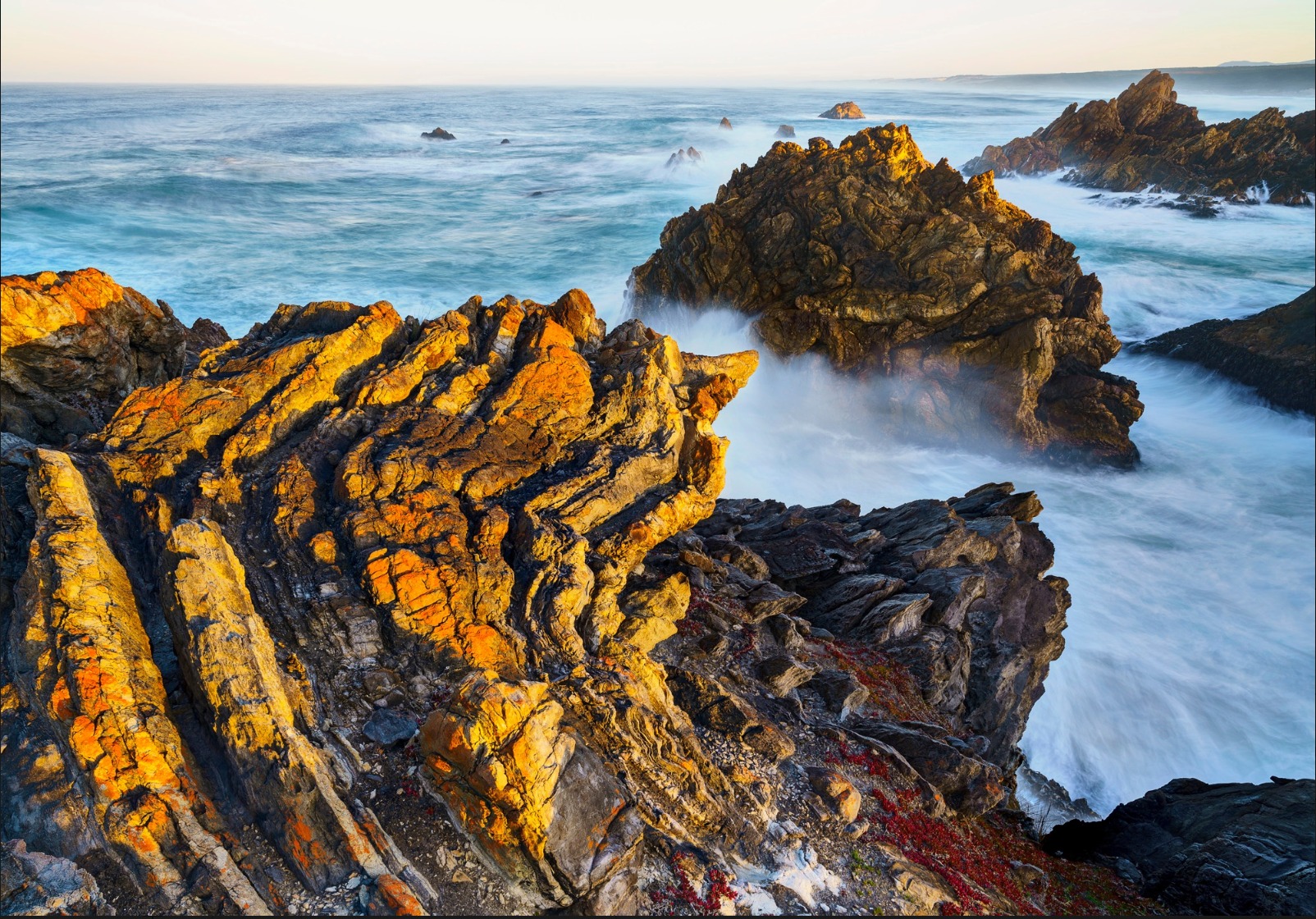
PHOTOGRAPHER: Grant Dixon
A major geological deformation event affecting Tasmania occurred about 520 million years ago. It was the result of a tectonic collision between the continent that this part of Tasmania was then a part, moving east, and a westward-moving volcanic island arc. Scenically-spectacular examples of the folding produced in rocks by this event are well-exposed on the Tarkine coast. The sandstone and conglomerate beds here comprise a turbidite sequence, deposited as density flows in a marine environment some 100 million years before they were folded. It is hard not to be impressed by the convoluted folds in these rocks and the jagged forms into which they have been shaped by eons of relentless westerly storms.
BEAKER STREET SCIENCE PHOTOGRAPHY PRIZE
This photograph was a finalist in Beaker Street’s annual Science Photography Prize. This highly-respected prize invites all Tasmanians to showcase the wonders of our extraordinary part of the world — which is teeming with science and scientists. Finalist images are displayed at the Tasmanian Museum and Art Gallery during Beaker Street Festival each August, with great prizes on offer for Judges’ and People’s Choice winners.
The Beaker Street Science Photography Prize would not be possible without the support of Full Gamut, Tasmania’s premier fine art printers and long-time sponsor of this competition. Many thanks also go to Pennicott Wilderness Journeys, which donates a generous prize for the People’s Choice winner.





